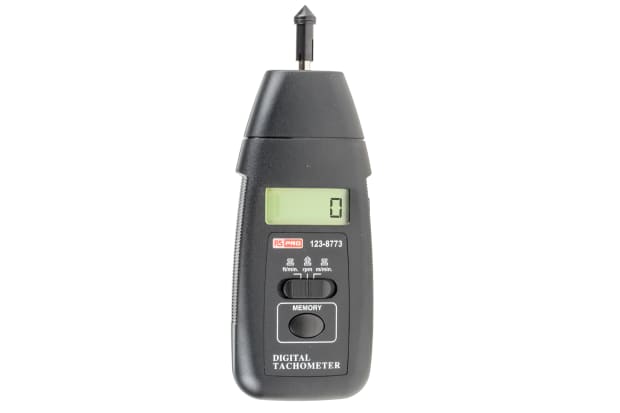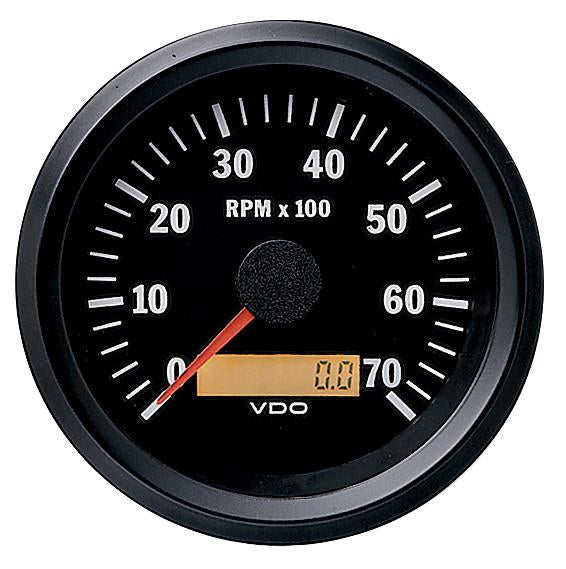Top Reasons Why Every Chauffeur Requirements a High-Quality Tachometer
Top Reasons Why Every Chauffeur Requirements a High-Quality Tachometer
Blog Article
The Significance of a Tachometer in Checking Engine Speed and Efficiency in Automotive Applications
In the realm of automobile design, the tachometer stands as a critical instrument in the vehicle driver's collection, providing a direct window right into the inner operations of a car's engine. Past its feature as a mere gauge of changes per min (RPM), the tachometer serves as a critical device for fanatics and specialists alike, supplying real-time understandings into engine efficiency and health and wellness.
Significance of Checking Engine RPM
Keeping an eye on engine RPM, or changes per minute, is a vital facet of auto upkeep and efficiency evaluation. Engine RPM straight correlates with the rate at which the engine's crankshaft rotates, indicating exactly how promptly the engine is running - tachometer. By keeping track of RPM, technicians can examine the wellness of the engine, identify prospective concerns, and fine-tune efficiency. An abnormal RPM analysis may indicate troubles such as engine misfires, faulty stimulate plugs, or concerns with the gas shipment system. Continually high RPM analyses might suggest aggressive driving routines or the requirement for a greater equipment change to enhance fuel effectiveness.
In addition, monitoring engine RPM is essential for performance evaluation in racing and high-performance vehicles. Keeping optimal RPM levels is critical for accomplishing peak power output and velocity. Racers frequently utilize tachometers to guarantee they are operating within the perfect RPM range for optimum efficiency. In summary, monitoring engine RPM is not only essential for finding problems however also for maximizing engine performance in various automotive applications.

Benefits of Real-Time Information
In automobile applications, real-time data plays an important role in giving instant understandings right into the performance and problem of the lorry. By constantly checking numerous specifications such as engine rate, temperature, fuel consumption, and much more, real-time data uses countless advantages that add to enhanced performance and safety on the road.
Additionally, real-time information assists in performance optimization by supplying prompt comments on driving practices and engine efficiency. Drivers can adjust their behavior in real-time based on this details to attain far better fuel economic situation and prolong the life-span of their automobile.

Moreover, real-time data plays a vital duty in modern-day automobile diagnostics, making it possible for professionals to swiftly diagnose and resolve breakdowns. This causes lowered downtime, lower upkeep costs, and eventually, improved total vehicle reliability and long life (tachometer). By using the power of real-time data, automotive stakeholders can make enlightened choices that positively impact both the efficiency and durability of the vehicle
Effect On Equipment Shifts
The tachometer plays a crucial role in optimizing gear shifts by providing real-time engine speed data published here to the driver. When approaching the redline on the tachometer, it signifies the motorist to upshift to avoid over-revving the engine and triggering possible damages.
In addition, the tachometer aids in achieving smoother gear changes, especially in hands-on transmissions. By monitoring engine rate, vehicle drivers can execute equipment changes at the optimum RPM array, lowering snagging motions and minimizing endure the transmission components. This accuracy in equipment adjustments not just improves driving comfort yet likewise contributes to fuel performance.
Enhancing Gas Efficiency
Provided the essential role the tachometer plays in enhancing gear shifts for performance and engine health, it directly contributes to making the most of gas effectiveness in auto applications. By supplying real-time comments on engine speed, the tachometer helps motorists in preserving one of the most reliable RPM range for gas economy. When chauffeurs constantly monitor the tachometer and change their driving practices accordingly, they can prevent unneeded gas usage triggered by over-revving or hauling the engine.
Additionally, the tachometer aids vehicle drivers identify the most fuel-efficient equipment to be in at any type of given minute, stopping the engine from working more difficult than essential. In final thought, the tachometer offers as a beneficial tool in enhancing fuel performance by promoting optimum driving behaviors and identifying areas for enhancement in the vehicle's efficiency.

Taking Full Advantage Of Engine Long Life
The tachometer's role in checking engine speed and efficiency is important in making certain the durability of automotive engines. Checking the tachometer enables vehicle drivers to stay within the advised RPM variety for their lorry, avoiding unneeded strain on the engine and expanding its lifespan.

Final Thought
In conclusion, the tachometer plays a critical function in monitoring engine rate and efficiency in vehicle applications. By giving real-time information on RPM, it permits reliable gear changes, enhanced fuel performance, and optimized engine longevity. This device is click for info important for keeping optimal engine efficiency and ensuring the general capability of a Visit Your URL car.
Report this page